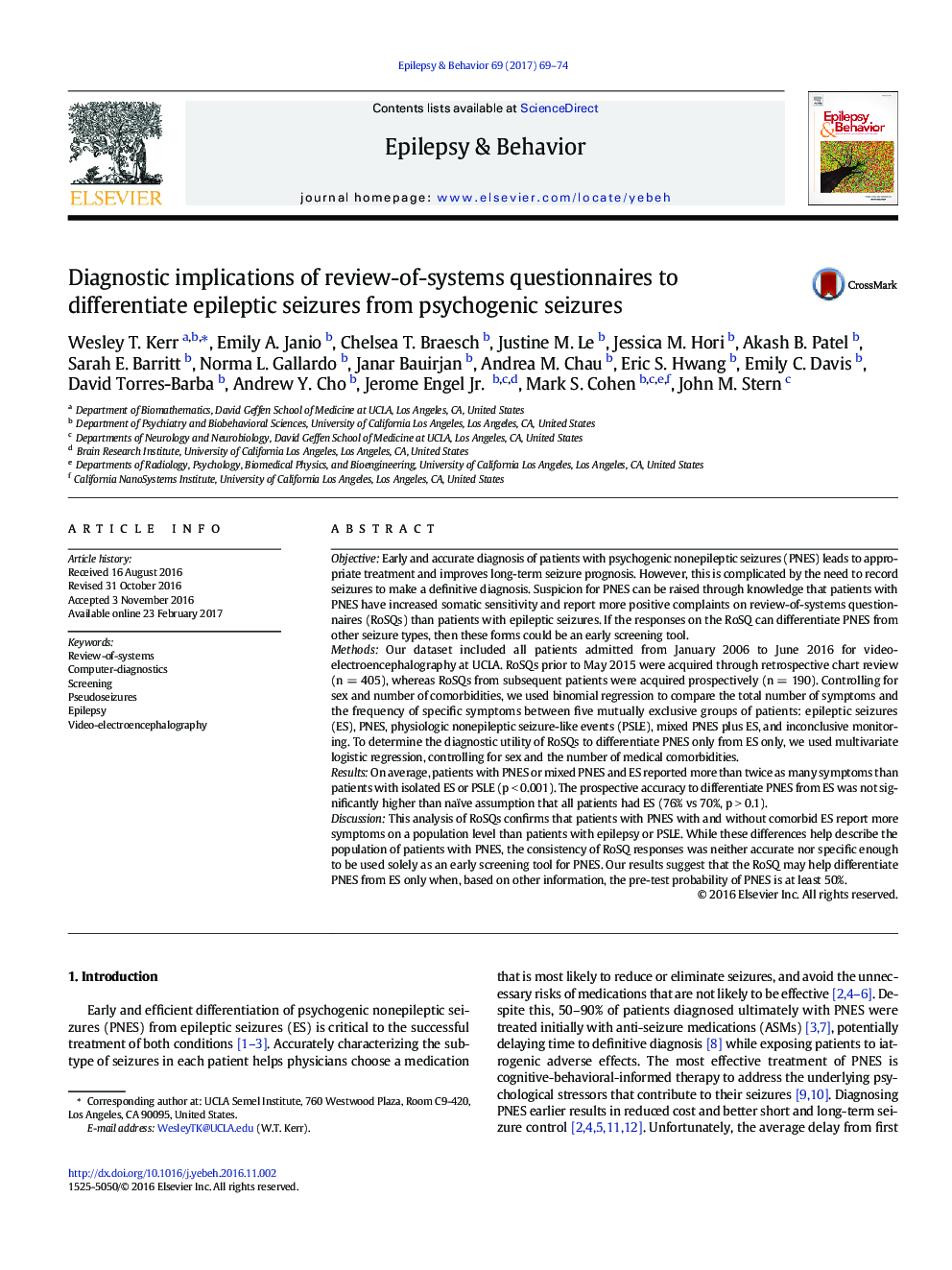| کد مقاله | کد نشریه | سال انتشار | مقاله انگلیسی | نسخه تمام متن |
|---|---|---|---|---|
| 5628402 | 1579823 | 2017 | 6 صفحه PDF | دانلود رایگان |
- Objective screening tools to identify PNES are needed.
- Patients with PNES report over twice as many review-of-systems complaints as those with ES.
- The percent of complaints is not a reliable diagnostic indicator for PNES over ES.
ObjectiveEarly and accurate diagnosis of patients with psychogenic nonepileptic seizures (PNES) leads to appropriate treatment and improves long-term seizure prognosis. However, this is complicated by the need to record seizures to make a definitive diagnosis. Suspicion for PNES can be raised through knowledge that patients with PNES have increased somatic sensitivity and report more positive complaints on review-of-systems questionnaires (RoSQs) than patients with epileptic seizures. If the responses on the RoSQ can differentiate PNES from other seizure types, then these forms could be an early screening tool.MethodsOur dataset included all patients admitted from January 2006 to June 2016 for video-electroencephalography at UCLA. RoSQs prior to May 2015 were acquired through retrospective chart review (n = 405), whereas RoSQs from subsequent patients were acquired prospectively (n = 190). Controlling for sex and number of comorbidities, we used binomial regression to compare the total number of symptoms and the frequency of specific symptoms between five mutually exclusive groups of patients: epileptic seizures (ES), PNES, physiologic nonepileptic seizure-like events (PSLE), mixed PNES plus ES, and inconclusive monitoring. To determine the diagnostic utility of RoSQs to differentiate PNES only from ES only, we used multivariate logistic regression, controlling for sex and the number of medical comorbidities.ResultsOn average, patients with PNES or mixed PNES and ES reported more than twice as many symptoms than patients with isolated ES or PSLE (p < 0.001). The prospective accuracy to differentiate PNES from ES was not significantly higher than naïve assumption that all patients had ES (76% vs 70%, p > 0.1).DiscussionThis analysis of RoSQs confirms that patients with PNES with and without comorbid ES report more symptoms on a population level than patients with epilepsy or PSLE. While these differences help describe the population of patients with PNES, the consistency of RoSQ responses was neither accurate nor specific enough to be used solely as an early screening tool for PNES. Our results suggest that the RoSQ may help differentiate PNES from ES only when, based on other information, the pre-test probability of PNES is at least 50%.
Journal: Epilepsy & Behavior - Volume 69, April 2017, Pages 69-74
